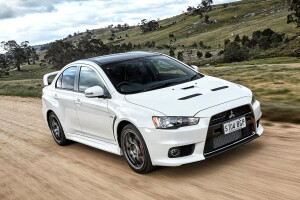Latest Review
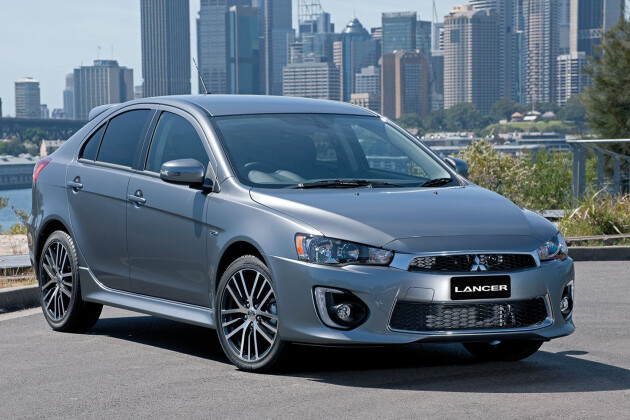
2016-2019 Mitsubishi Lancer Range Review
The Mitsubishi Lancer is a roomy small car that appeals for its style, plentiful equipment, and warranty.
What stands out?
Discontinued at the end of 2018, the Mitsubishi Lancer appealed for its exterior styling, equipment level, and five-year warranty. The sedan and hatchback are also fairly roomy inside for small cars.
This review also carries comments on the high-performance Lancer Evolution, which was discontinued about the beginning of 2016 but remains justly renowned for speed, grip and responsiveness. Listed equipment applies to the Evolution Final Edition.
What might bug me?
Driving under 80km/h on the space-saver spare tyre, until you can fix your full-sized flat.
The fact you won't be able to get a brand new Lancer. Mitsubishi dropped its popular small car at the end of 2018, though it remained on sale into 2019.
(Wishing you had a spare tyre, if you bought a high-performance Lancer Evolution. These had only a tyre repair kit.)
What body styles are there?
Four-door sedan and five-door hatchback.
The Mitsubishi Lancer drives its front wheels, and is classed as a small car, lower priced.
(The discontinued Lancer Evolution drove all four wheels.)
What features did all later versions have?
Cruise control, and climate control air-conditioning (which maintains a set temperature).
A reversing camera, with the image displayed on a 6.1-inch colour touchscreen.
A sound system with CD player and digital radio, and USB input. Bluetooth phone and audio connectivity, with a voice command function. Controls on the steering wheel for the cruise control, the audio system and your phone.
Daytime running lamps (which help other drivers see you), with very efficient and long-lasting LED bulbs.
Aluminium alloy wheels, with either a space-saver steel spare wheel or (in the Lancer Evolution) a tyre-repair kit.
Seven airbags, and electronic stability control - which can help you control a skidding car. (For the placement of airbags, please open the Safety section below.)
Every Mitsubishi Lancer carries a five-year, 100,000 kilometre warranty.
Which engine uses least fuel, and why wouldn't I choose it?
The 2.0-litre petrol four-cylinder engine in the ES Sport and LS sedans uses the least fuel, at 6.9 litres/100km with manual transmission (official test, city and country). With an automatic gearbox it uses 7.3 litres/100km on the test.
The other engine available is a 2.4-litre four-cylinder, which comes with the Lancer GSR Sportback and GSR Sedan. It provides about 15 per cent more vigour but uses 25 per cent more fuel.
In any Lancer you can have a five-speed manual transmission or a continuously variable (CVT) automatic.
(The Lancer Evolution Final Edition had a turbocharged 2.0-litre engine that produced more than twice as much power as the non-turbo 2.0 litre in the ES. It was offered only with a five-speed manual gearbox; the previous Evo MR had a six-speed dual-clutch auto.)
What key features do I get if I spend more?
The least costly Lancer, the ES Sport Sedan, comes with cloth-covered seats, 16-inch wheels, and the features common to all Lancers.
Spend more for an LS sedan and you get smart key access . You don’t have to press a key-fob button to unlock the car – just open the door with the key in your pocket or bag.
Inside an LS, you get leather on the seats, steering wheel and gear shifter. The front seats are heated, and the driver’s seat is power-adjustable. Headlamps switch on automatically when it’s getting dark, and windscreen wipers operate automatically when it rains. There are rear parking sensors. Wheel diameter increases to 18 inches, and tyres are correspondingly lower in profile but also slightly wider, adding marginally to grip.
Spending about the same for a GSR Sportback (hatch) or Sedan gets you the more powerful 2.4-litre engine and firmer suspension. You keep the 18-inch wheels, and the automatic headlamps and wipers, but the seats lose their leather panels.
(At more than twice the price of a GSR, the Lancer Evolution Final Edition had the much more powerful, turbocharged, engine, all-wheel drive, and wider tyres with a still lower profile. Equipment followed the LS but with a high-performance slant and some omissions. There were Recaro sports front seats with partial leather trim, but no powered seat adjustment or rear parking sensors. Suspension dampers were from specialist Bilstein, brakes from Brembo, and wheels from BBS.)
Did any upgrade have a down side?
The sports suspension and 18-inch wheels of the GSR models degrade ride comfort.
Seven colours are available for the less costly Lancers. Many of these colours are metallic and add about $500 to the price of a car.
(Stiffer-still suspension in the Lancer Evolution made it borderline harsh to ride in. It came in four colour schemes, each with a black roof panel.)
How comfortable is it?
The Mitsubishi Lancer ES Sport sits in the middle among small cars for its ability to isolate occupants from bumpy roads. The LS, with its lower profile tyres, and the GSR Lancers, with their firmer sports suspension, are less polished in their absorption of bumps.
The Lancer cabin is made from widely used plastics and textiles, and the design is unadventurous.
The driving position is easily adjusted in any version.
(The Lancer Evolution was among the most firmly suspended, noisy and hard-riding of small cars available. Large occupants might feel squeezed by its Recaro front seats.)
What about safety?
All Lancers have anti-lock brakes, stability control, seven airbags, a reversing camera, and daytime running lights – which make it easier for other drivers to see you.
There are two airbags directly in front of the driver and front passenger; one alongside each front occupant at chest level to protect from side impacts; a curtain airbag extending down each side of the car at head level, protecting occupants front and rear from side impacts; and a knee protection airbag for the driver.
Autonomous emergency braking is not offered on any Lancer.
The Australasian New Car Assessment Program (ANCAP) awarded the Mitsubishi Lancer its maximum five-star rating, most recently in November 2015.
I like driving - will I enjoy this car?
Lancers are among the less engaging of new small cars. In most Lancers the steering does not feel lively enough to bring the driver an inspiring sense of communication with the road.
Lancer LS and GSR variants have more tyre grip, and GSRs are more responsive, but steering remains a weakness.
(In contrast, the Lancer Evolution was less comfortable than the other Lancers but hugely entertaining, with a lot of speed, heroic handling, and tenacious all-wheel-drive grip.)
How is life in the rear seats?
The Lancer’s rear seat is comfortable, offering a good backrest angle and adequate under-thigh support. Shoulder, head and leg room is about average for a small car. The seat can carry three passengers, with lap and sash belts for all.
Rear compartment ambience is let down – just as it is in the front – by hard plastics and plain-looking door trims.
How is it for carrying stuff?
The Lancer Sportback, like any hatchback, is better for carrying stuff than the sedan. It offers 330 litres of cargo capacity, which is good but not great against the benchmarks in small cars. That’s more than a Mazda3, for example, but less than a Subaru Impreza.
Backrests that split-fold 60/40 can be flipped using levers in the boot, which is a very handy feature.
The Lancer sedan’s boot can hold 400 litres – on the small side, but about the same as a Mazda3.
Where was the Lancer made?
The Mitsubishi Lancer is manufactured in Japan.
What might I miss that similar cars have?
A sixth gear in manual versions, which is handy for lowering engine revs and noise – and fuel consumption – at highway cruising speeds.
A turbocharged engine, such as Volkswagen has in the Golf, and Ford in the Focus. These respond more eagerly to the accelerator pedal, particularly from low speeds.
Automatic emergency braking – standard on all Mazda3s, for example, and available on several other small cars. A sensor detects obstacles in front of the car (typically another car that has slowed suddenly), and a computer applies the brakes if it concludes that a collision is imminent.
The ability to display apps from your smartphone on the car’s central screen in the dashboard, and control them from there, via Apple CarPlay or Android Auto. The Golf, Focus, Hyundai i30, Subaru Impreza, and Holden Astra are among small cars offering this.
In general, many small cars developed more recently are worth investigating for their interior feel and level of driving enjoyment. Examples in addition to those mentioned above are the Honda Civic, Toyota Corolla, and Kia Cerato.
I like this car, but I can't choose which version. Can you help?
The best value proposition in the Lancer range is the well-equipped LS sedan. Getting keyless entry, front-seat heaters and partial leather trim in a small car at this price point is unusual.
Are there plans to update this model soon?
No, sadly Mitsubishi discontinued one if its most popular nameplates at the end of 2018, with its MY19 stock still selling throughout 2019. The company announced it had no plans to replace the Lancer, with passenger range made up of SUVs.
The Lancer now represents a good used buy, with the final generation going back as far as 2007 in Australia.
The sporty Lancer Ralliart and Lancer Evolution MR were dropped from the range in 2015, and the Evolution was replaced with the more powerful and better equipped Evolution Final Edition (which sold out rapidly).
In January 2016, the Lancer range received a facelift. The luxury Lancer XLS was dropped, and a sedan version of the more powerful GSR Sportback was added. A colour touchscreen and reversing camera were extended to all models, and the Lancer LS gained some luxury features.
The Lancer continued unchanged until its demise, except for minor engine revisions to meet new emissions standards (Euro 5).
Score breakdown
Things we like
- Looks
- Warranty
Not so much
- Showing its age
News
-
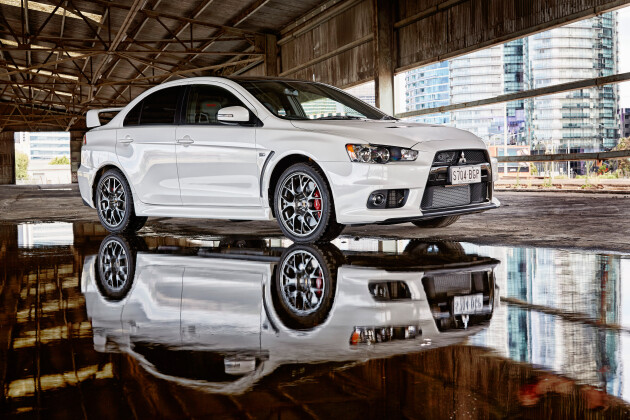 Features
FeaturesWhy the Mitsubishi Lancer Evo X is the Evolution to buy
Ten out of Ten: Mitsubishi’s iconic rally racer reaches its final evolution
-
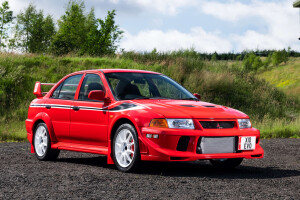 News
NewsLancer Evo VI Tommi Makinen Edition sells for almost $300,000
Eye-watering final price reached for Evo VI TME #001
-
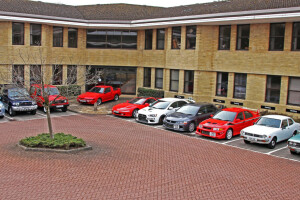 News
NewsMitsubishi UK is selling its entire fleet of historic vehicles
14 of the best Mitsis going under the gavel with no reserve
-
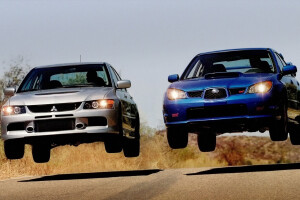 Features
FeaturesWhat killed the craze for all-wheel drive rally replicas?
At one point, everyone seemed to have a hot Subaru WRX or Mitsubishi Evo, and then it all went bust. We investigate why.
-
2005 Mitsubishi Lancer Evolution IX Wagon: Fast Car History Lesson
-
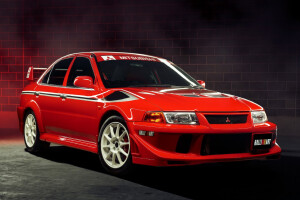
Modern Classic: 2000 Mitsubishi EVO VI Tommi Makinen Edition
-
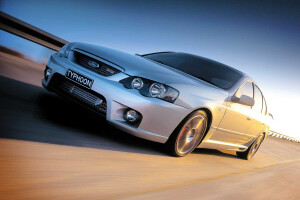
MOTOR's 2018 Christmas slays: The boost brigade
-
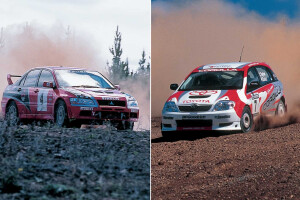
2003 Toyota Corolla vs Mitsubishi EVO VII rally comparison: classic MOTOR


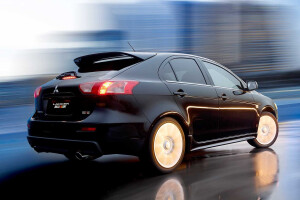


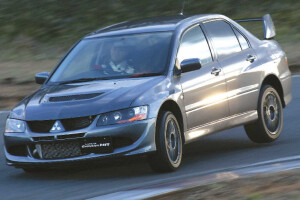
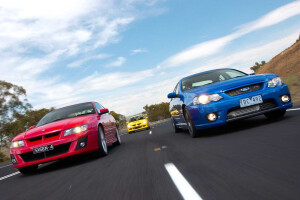
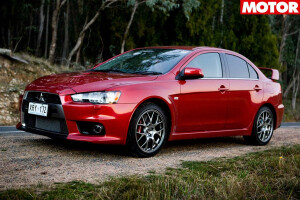
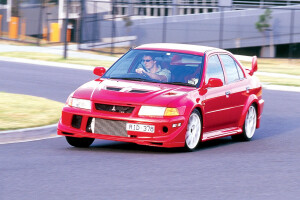
.jpg)
